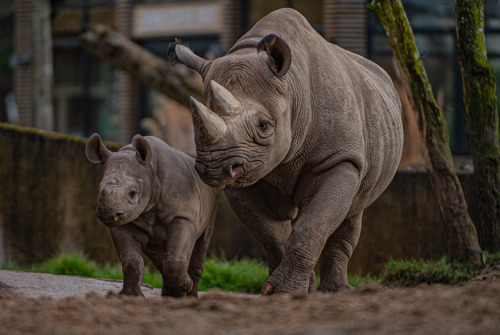
Helping Eastern black rhinos thrive in the wild
From lab work in Chester to ranger training in Kenya, we’re giving this iconic species a second chance.
The Eastern black rhino is one of the world’s most magnificent and endangered animals. Once roaming across much of East Africa, fewer than 600 remain in the wild today, according to the IUCN.
Most live in protected reserves in Kenya, where conservation teams are working tirelessly to protect this incredible species.
The threat of poaching
Despite having no proven medicinal value, rhino horn continues to be highly sought after, particularly for traditional medicines and ornamental use. Poaching remains the greatest threat to the eastern black rhino, pushing them dangerously close to extinction.
But there is hope. In protected areas where rhinos are safely monitored, some populations are breeding well. Now, conservationists are turning their attention to a crucial next step – expanding rhino territory to allow those numbers to keep growing.

Science at the zoo for an impact in the wild
At Chester Zoo, we’re proud to be combining science and conservation to support the survival of the eastern black rhino. In 2007, we opened a specialist wildlife endocrinology lab – a space dedicated to understanding animals’ hormone health.
Thanks to this research, twelve Eastern black rhino calves have been born at the zoo, and now, we’re taking that expertise to the wild. By analysing hormones like cortisol (stress) and progesterone (reproduction), our scientists can help assess how rhinos are coping after being moved to new, safer areas. The aim? To make relocations smoother, stress levels lower, and breeding success higher.

Conservation in action
The first samples tested came from Loisaba Conservancy, a vast 58,000-acre wildlife haven in northern Kenya. These tests mark a new frontier in rhino conservation, providing data that can help improve how and where rhinos are moved across Africa.
Alongside this, we’re proud to support frontline partners like The Big Life Foundation and the Kenya Wildlife Service, working in places like Chyulu Hills to stop poaching before it happens. From camera traps to ranger training, our work is helping rhinos stay safe and thrive.
A symbol of strength
The Eastern black rhino is a symbol of conservation. With their powerful presence and ancient lineage, they remind us what we’re fighting for. And thanks to collaboration, science, and your support, their future looks a little brighter.
